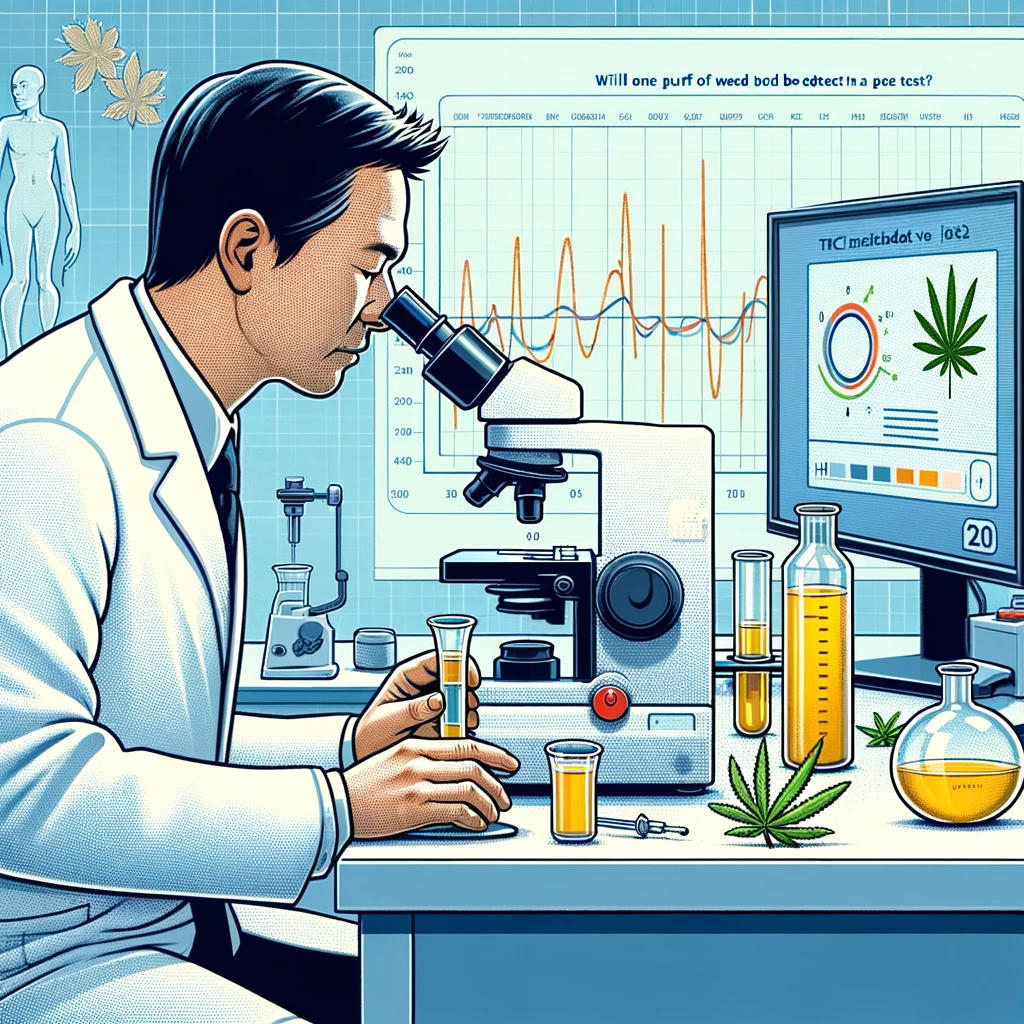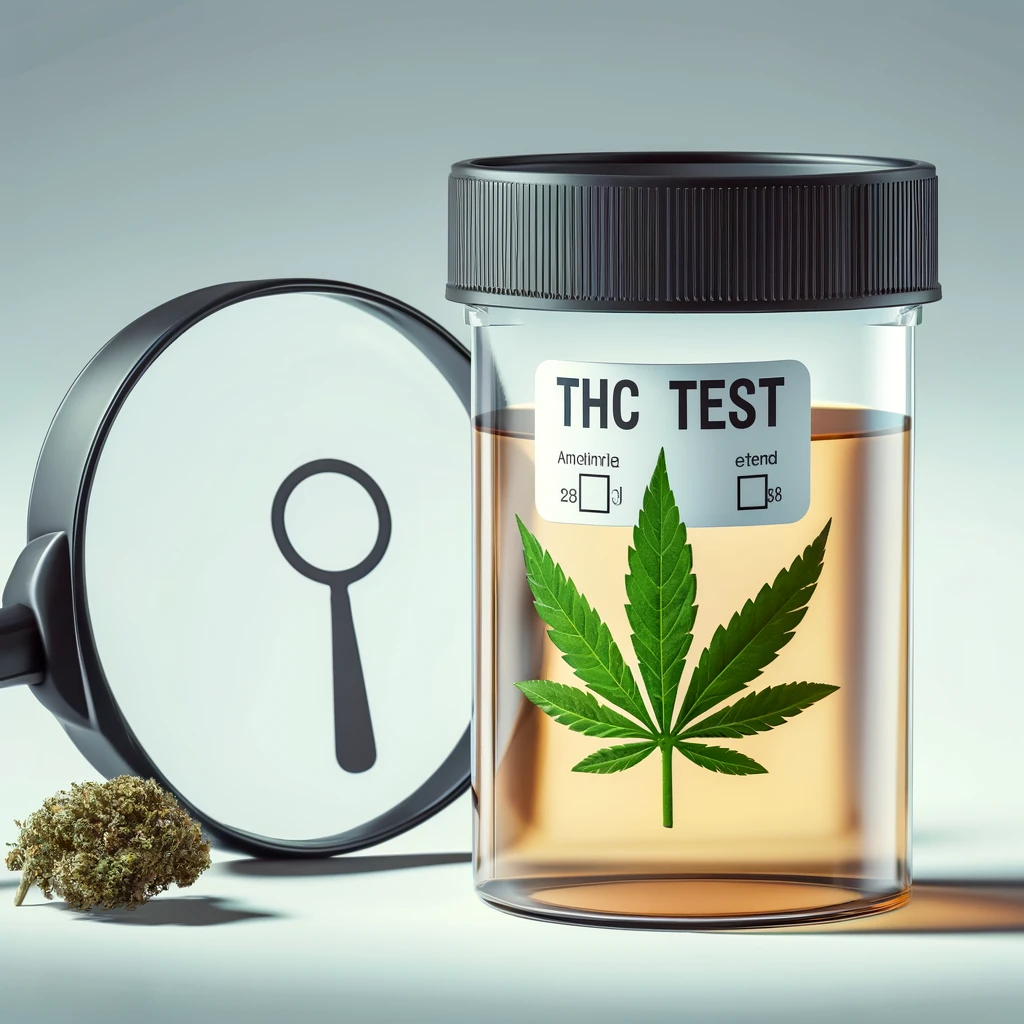Will One Puff of Weed Be Detected in a Pee Test? – 7 important information. Marijuana, one of the most commonly used recreational drugs worldwide, often comes under scrutiny due to its detectability in drug tests. As legal landscapes evolve, understanding how and when marijuana can be detected in the body becomes crucial for both users and authorities. This knowledge is particularly important given the frequent use of urine drug tests by employers, legal entities, and even health practitioners.
Urine testing remains the most prevalent method for detecting marijuana, primarily because it is cost-effective, easy to administer, and capable of detecting past usage rather than just immediate intoxication. THC, the psychoactive component of marijuana, can linger in the body long after the effects are felt, raising concerns and questions about how even minimal use can be detected.
In this article, we explore the scientific basis behind the detection of marijuana in urine tests and delve into whether a single puff can be identified. Understanding these mechanisms is essential for anyone needing to navigate the complex interplay of personal use, legal implications, and workplace obligations concerning marijuana.
See also: Lion’s mane psychedelic effects – 7 important information
How Drug Testing for Marijuana Works
Understanding the mechanics of urine drug testing for marijuana requires a basic knowledge of THC, its metabolites, and how these substances interact with and are processed by the human body.
Basics of Urine Drug Testing for THC Detection Urine tests for marijuana detect not THC itself but its metabolites—chemicals produced when the body breaks down THC. The primary metabolite tested for is THC-COOH, which is stored in body fat and slowly released into the bloodstream before being eliminated through urine. Urine tests use immunoassay techniques, with antibodies designed to react to THC-COOH. If the concentration of this metabolite is above a certain threshold, typically 50 nanograms per milliliter, the test result is positive.
THC and Its Metabolites THC (Tetrahydrocannabinol) is the psychoactive compound in marijuana that produces feelings of euphoria and relaxation. When THC is consumed, the body metabolizes it into several chemicals, the most significant being THC-COOH. This process starts in the liver, where enzymes break down THC into its metabolites, which can then be detected in the urine.
How THC is Processed in the Body After inhalation or ingestion, THC quickly enters the bloodstream. Its fat-soluble nature means it can be stored in fat tissues in the body and released back into the bloodstream over time. This gradual release is why THC metabolites can be detected long after the effects of marijuana have faded, especially in frequent users. The rate at which THC is metabolized and cleared from the body depends on several factors including body fat percentage, metabolic rate, and the frequency and quantity of marijuana use.
The detection of THC through urine testing hinges on the sensitivity of the test and the metabolic rate of the individual. Understanding these factors is crucial for interpreting how long marijuana use can be detected and what a positive test might mean in terms of recent versus past usage.

Factors That Affect THC Detection
The detectability of THC in urine tests can be influenced by multiple factors, each contributing differently depending on individual circumstances and consumption habits. Understanding these factors is crucial for anticipating how long THC might remain detectable in your system.
Frequency of Use
- Regular Users: THC accumulates in the body fat of frequent users, leading to a longer detection window as THC metabolites are released slowly over time.
- Occasional Users: For those who smoke or ingest marijuana sporadically, THC metabolites may not accumulate in the same way, potentially shortening the detection period. A single puff, for example, is less likely to show up in a urine test after several days compared to the prolonged presence seen in regular users.
Individual Metabolism
- Metabolism plays a key role in how quickly THC is broken down and cleared from the body. People with a faster metabolism will generally process and eliminate THC more quickly than those with a slower metabolic rate.
Body Fat
- Since THC is fat-soluble, individuals with higher body fat percentages may retain THC metabolites longer than those with less body fat. This can extend the time during which THC is detectable in urine.
Potency of the Marijuana Consumed
- The stronger the marijuana (i.e., higher THC content), the more THC is introduced into the body per use. High-potency marijuana can result in higher concentrations of metabolites, which are detectable for longer periods.
Impact of a Single Puff
- Taking one puff of marijuana introduces a relatively small amount of THC into the body. For individuals who do not frequently consume cannabis, this may result in a shorter period during which THC metabolites are detectable in urine. The likelihood of THC being detected from a single puff decreases as time passes, particularly if it was a one-time or rare event without prior accumulation of THC in the body.
Understanding these variables is essential for anyone trying to gauge how their body might react to occasional versus regular marijuana use in the context of drug testing. These factors collectively determine not only if THC will be detectable but also for how long.
See also: Keratin Therapy Shampoo – 7 Important Information
Detection Window for Occasional Users
Understanding the detection window of THC in urine tests is crucial, particularly for those who consume marijuana infrequently. Defining what distinguishes an “occasional” user from a “regular” user can help set realistic expectations for test outcomes.
Defining Occasional vs. Regular Users
- Occasional Users: Typically, occasional users are those who consume marijuana sporadically, perhaps once a week or less. They do not use marijuana consistently enough for THC metabolites to accumulate significantly in their body fat.
- Regular Users: Regular users consume marijuana more frequently, often several times a week or daily. This frequency allows THC levels to build up in the body, resulting in a longer detection period in urine tests.
Detection Window for Occasional Users For occasional users, the detection window of THC is considerably shorter compared to that for regular users. The factors that influence this include:
- Amount and Potency: A single puff generally introduces a small amount of THC into the body. If the marijuana has a lower THC content, the resulting metabolites may not reach the threshold required for a positive test result.
- Metabolism and Body Composition: These individual characteristics significantly influence how quickly THC is metabolized and cleared. Faster metabolism and lower body fat can shorten the detection window.
Typical Detection Windows
- Immediate to 3 Days: For a truly occasional user, THC from a single puff might only be detectable in urine for a few days following consumption. In some cases, if the exposure is minimal and the individual has a rapid metabolism, THC might not be detectable at all.
- Variable Factors: It’s important to consider that hydration levels, the time between consumption and testing, and even the method of consumption (e.g., smoking vs. edibles) can alter how long THC is detectable.
The sensitivity of the urine test also plays a critical role. Most standard tests are designed to catch regular users, with cutoff levels that might not always detect a single use by an occasional user. However, more sensitive tests could potentially identify even minimal THC exposure.
For anyone who is an occasional user concerned about drug testing, it’s prudent to consider these factors and understand that while detection is less likely with minimal use, it is not impossible.

Scientific Studies and Evidence
In order to understand the likelihood of detecting THC from a single puff of marijuana, it’s helpful to consider the scientific research and evidence that have studied the detectability of THC after limited use. This section will discuss relevant studies and the insights provided by experts in the field.
Research on THC Detection
- Studies on Occasional Users: Several studies have focused on the detection of THC in occasional users. For example, research published in the Journal of Analytical Toxicology examined the presence of THC metabolites in the urine of individuals after a single exposure. The study found that THC was detectable in urine at significant levels within the first 24 hours for most subjects but dropped below detectable levels quickly thereafter.
- Detection Thresholds: Most standard drug tests use a threshold of 50 nanograms per milliliter to determine a positive result. Studies suggest that after a single puff, THC levels can occasionally reach this threshold but typically only if the test is conducted shortly after consumption.
Expert Opinions
- Toxicologists and Pharmacologists: Experts in these fields often discuss the variability of THC metabolism. They note that factors such as the method of consumption, the individual’s metabolic rate, and body fat percentage play critical roles in how long THC can be detected. Experts agree that while it is possible for a single puff to result in a positive test, it is generally unlikely unless the test is performed very soon after consumption.
- Legal and Medical Authorities: These experts often emphasize the legal implications of testing positive and the importance of understanding local marijuana laws. They also caution that the sensitivity of tests may vary, and newer, more sensitive tests could potentially detect lower levels of THC.
Relevance to Real-World Scenarios
- Practical Advice: Based on scientific evidence, the consensus is that for most occasional users, THC from a single puff will not be detectable in urine after a few days. However, this does not eliminate the risk entirely, especially in scenarios where highly sensitive tests are used.
The data from these studies and the insights from experts provide a nuanced view of THC detection. While a single puff might not lead to long-term detectability, the timing of the test relative to consumption and the sensitivity of the testing method are crucial factors. This information is invaluable for individuals trying to navigate the complexities of drug testing in various professional and legal contexts.
See also: Why am i craving pineapple – 7 important information
Legal and Employment Considerations
Testing positive for THC in a urine drug test can have significant legal and employment-related consequences. Understanding these implications and being aware of local laws and workplace policies is crucial for anyone subject to drug testing.
Employment Consequences
- Job Offers and Employment Status: Many employers require drug tests before finalizing a job offer or as a condition of continued employment. Testing positive for THC can lead to withdrawal of a job offer, disciplinary action, or even termination, depending on company policy.
- Safety-Sensitive Positions: For positions that involve operating heavy machinery, driving, or other safety-sensitive tasks, employers are particularly strict about drug use. Here, the implications of a positive test can include immediate suspension or stricter legal repercussions.
- Impact on Professional Reputation: Beyond immediate job-related consequences, testing positive can affect one’s professional reputation and future employment prospects, particularly in industries where trust and reliability are paramount.
Legal Consequences
- Variability by Region: The legal consequences of a positive THC test can vary widely depending on local marijuana laws. In regions where marijuana is illegal, any positive test could potentially lead to legal penalties, including fines or other criminal charges.
- Medical Marijuana Users: In jurisdictions where medical marijuana is legal, users should be aware of their rights and the protections afforded under the law. However, even in these areas, employers may have policies that place restrictions on marijuana use.
Advice on Understanding Local Laws and Workplace Policies
- Research Local Laws: It’s essential for individuals to familiarize themselves with the marijuana laws specific to their state or country. This understanding can help gauge the legal risks associated with marijuana use, even if it’s infrequent.
- Review Workplace Drug Policies: Individuals should thoroughly review their employer’s drug testing policies, which are often found in the employee handbook or HR policies. Knowing these rules can help in making informed decisions about marijuana use, especially if subject to regular or random testing.
- Consult Legal or HR Experts: If there’s uncertainty about the implications of marijuana use in your specific context, consulting with legal advisors or HR professionals can provide guidance tailored to your situation.
Being proactive about understanding these legal and employment aspects is vital for anyone who uses marijuana, even occasionally. This knowledge not only helps in making informed decisions but also in navigating potential challenges that could arise from drug testing in personal and professional contexts.
Will One Puff of Weed Be Detected in a Pee Test – Conclusion
Throughout this article, we have delved into the complexities of detecting a single puff of marijuana in a urine test, examining various scientific, legal, and employment-related aspects. The detectability of THC from minimal use such as one puff is influenced by several factors including the frequency of use, individual metabolism, body fat, and the potency of the marijuana consumed. Scientific studies suggest that while THC can be detected shortly after consumption, it is generally unlikely for a single puff to be detectable after a few days, particularly for occasional users.
Key Points Summary:
- Scientific Insights: The sensitivity of urine tests and the body’s metabolism play crucial roles in the detectability of THC. For occasional users, THC from a single puff generally does not remain detectable in urine for an extended period.
- Legal and Employment Risks: The consequences of testing positive for THC can be severe, affecting one’s employment and legal status. The implications vary significantly based on local laws and specific workplace policies.
- Preventative Measures: Understanding and adhering to local marijuana laws and workplace drug policies is essential. Being informed helps in making cautious decisions about marijuana use.
As you navigate the considerations of marijuana consumption, especially in environments that require drug testing, it is crucial to weigh both the scientific evidence and the legal ramifications. By staying informed about how THC is detected and understanding the potential legal and workplace consequences, you can make more informed decisions about marijuana use that align with your personal and professional life.
We encourage you to consider these factors carefully and continue seeking knowledge on this topic, as laws and scientific understanding evolve. Your awareness and proactive approach can significantly mitigate the risks associated with marijuana use in contexts where drug testing might occur.
Call to Action
As we continue to navigate the complexities of marijuana use and its detectability in drug tests, your experiences and insights are invaluable. Whether you have faced challenges with employment drug testing, navigated the legal implications of marijuana use, or simply have questions about the process, we invite you to share your stories. Your contributions can help foster a deeper understanding and provide support to others in similar situations.
If you found this article enlightening and wish to stay updated on similar topics, consider subscribing to our newsletter. By joining our community, you will receive well-researched articles that delve into the scientific and legal nuances of drug testing, marijuana laws, and much more. Your knowledge and preparedness are your best defense in a world where drug policies and legal landscapes are constantly evolving.
Let’s keep the conversation going. Share your experiences, ask questions, and join a community committed to understanding the intricacies of marijuana use and detection. Together, we can navigate these challenges more effectively.
References


